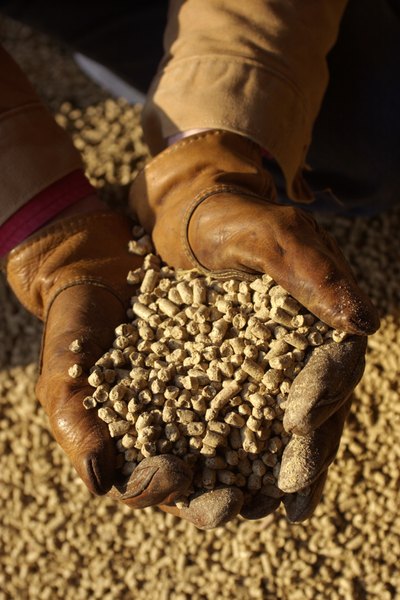How to Invest in Soybeans
Investors can gain direct exposure to soybeans by purchasing futures, options and exchange-traded investments.
Thinkstock Images/Comstock/Getty Images
Soybeans are one of the largest agricultural crops produced in the Unites States. According to the EPA, approximately 2.8 billion bushels of soybeans were harvested from almost 73 million acres of cropland in the United States in 2000. This provides an enormous investment opportunity. While investors can participate indirectly by owning fertilizer companies and other agricultural stocks, there are only three investment vehicles that provide direct exposure to soybean prices: futures, futures options and exchange-traded investments. Each of these investment types have distinct features that should be considered.
Tip
Individuals can invest in soybeans using futures contracts and other exchange-traded assets.
Understanding Soybean Futures
A futures contract is described by the National Futures Association (NFA) as a legal obligation to buy or sell a commodity or financial instrument at a later date. Soybean futures are traded on the Chicago Board of Trade in either open outcry (trading pit) or electronic format.
One contract represents 5,000 bushels of soybeans, while one mini-sized contract represents 1,000 bushels. Contract holders (buyers) are legally obligated to take physical delivery upon expiration. To avoid physical delivery, contract holders can exit their positions prior to expiration.
Purchasing Soybean Futures Options
Another way to avoid physical delivery is to purchase options on soybean futures. CME Group defines futures options as contracts that give the bearer the right, but not the obligation to buy or sell futures within a specified time period at a predetermined (strike) price. Investors desiring the right to buy soybean futures purchase "calls," while those wanting the right to sell soybean futures buy "puts." Options may be traded for gain or used as insurance against loss. If left unexercised, options expire worthless.
Exploring Exchange-traded Investments
Exchange-traded investments in soybeans include ETFs, ETNs and commodity pools. They're traded on the New York Stock Exchange, can be actively or passively managed and have an internal expense ratio. The PowerShares DB Agriculture Fund (DBA) is a diversified agricultural ETF that invests in soybean, corn, live cattle and many other agricultural futures.
The iPath Grains Total Return Sub-Index (JJG) is an ETN that invests only in soybean, corn and wheat futures. The Teucrium Soybean Fund (SOYB) is a commodity pool that invests solely in soybean futures. Each of these funds offer different levels of diversification. Investors can take long and short positions, allowing them to profit whether prices rise or fall.
Other Valuable Considerations
While soybean futures, options and exchange-traded investments come with their own unique risks, they're all affected by the same overall market influences that determine supply and demand. Investors should keep a constant eye on acreage intentions, carry costs and expenses, crop yields, international trade, stockpiles and weather. As these dynamic influences continually change, prices respond accordingly.
References
Writer Bio
Michael MacLean is the owner/proprietor of MACLEAN & Co. Financial Planning in Port Huron, Mich. He has more than 20 years of experience, including positions as a trader and financial adviser. He earned his MBA at Kettering University and currently holds the MFP® Master Financial Planner™ designation.

